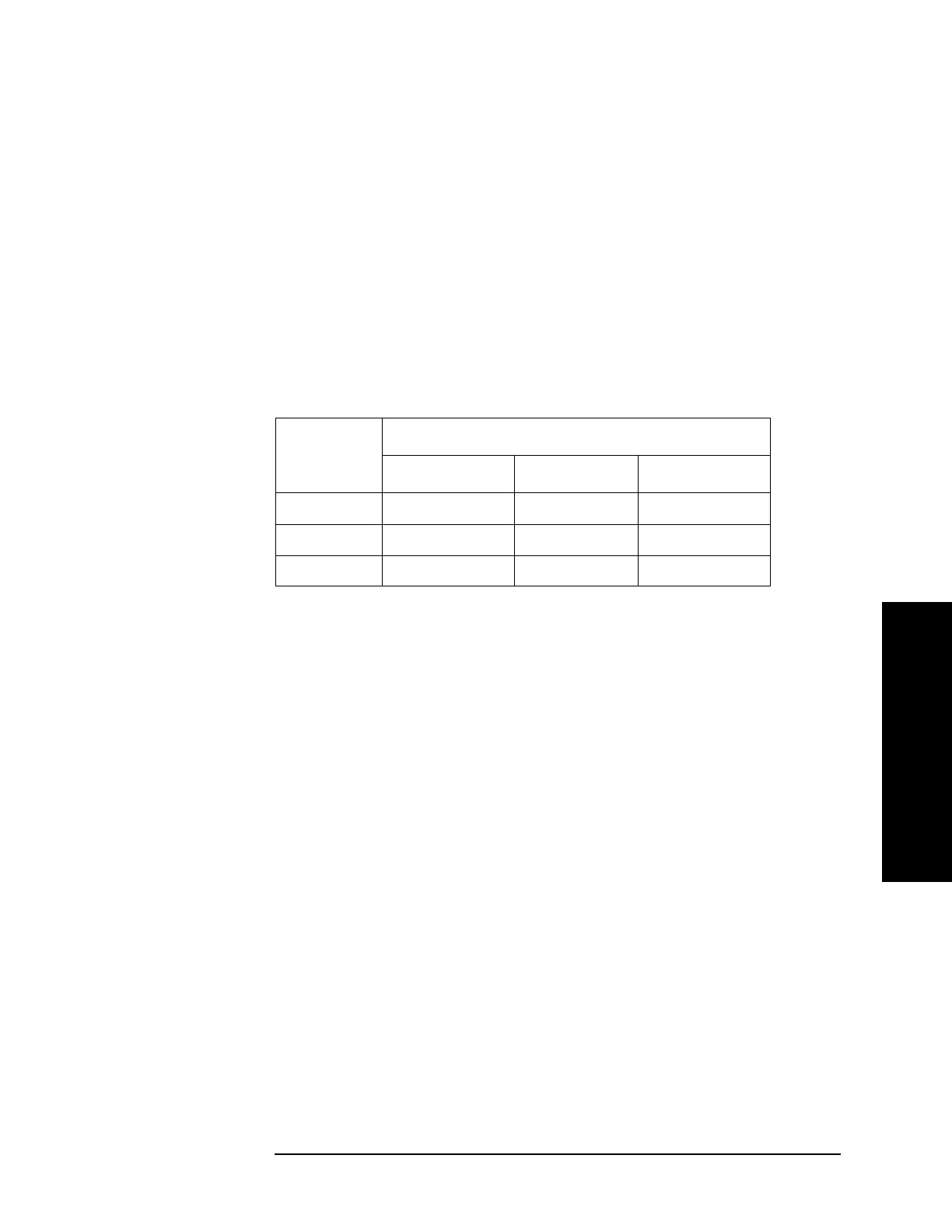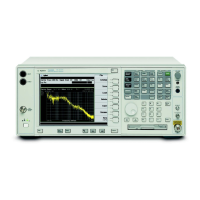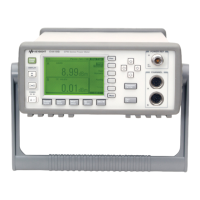Chapter 5 289
Concepts
Tuned RF Level Measurement Concepts
Calibration Factors
An individual calibration factor is computed for each RF range-to-range change by
comparing the level measured during the initial power sensor calibration to the
level measured for each RF range. This individual level measurements are ratioed
to determine the relative, range-to-range calibration factors actually used in Tuned
RF Level measurements.
The following table describes the equations used to calculate the ratioed
calibration factors using individual calibration factors.
In this table, the Power Reference Range is the range used for initial calibration to
the power sensor, and CF1, CF2 an CF3 are the “individual” calibration factor
values for the range reference to 1, 2, or 3 (respectively)
If no actual calibration factors are available, an approximate calibration factor
(accurate within a few dB) is derived.
Requirements for the Tuned RF Level Measurement
1. The Power Meter and Sensor must be calibrated.
The accuracy of the Tuned RF Level measurement depends on a calibrated RF
Power measurement made with an external power sensor.
2. The PSA must be properly tuned.
The PSA must be tuned manually to the DUT frequency. Press
Frequency and
enter the DUT frequency.
3. The Tuned RF Level calibration factors for the frequency being measured must
be in place or obtained during the TRFL measurement. See “PSA Range
Calibration” on page 56.
Up to three calibration factors will be created.
Each individual calibration factor is tagged with the frequency at which it is
valid, the IF BW setting, and the Accuracy (Normal/High) setting. If any of
these conditions change, the calibration factor becomes invalid.
File Operations
See “File Operations”, on page 54.
Table 5-2 Table of Calibration Factors
Power
Reference
Range
Current Range
123
1 CF1 CF1 CF2 CF1 CF2 CF3
2 CF2/CF1 CF2 CF2 CF3
3 CF3/ CF2/CF1 CF3/CF2 CF3

